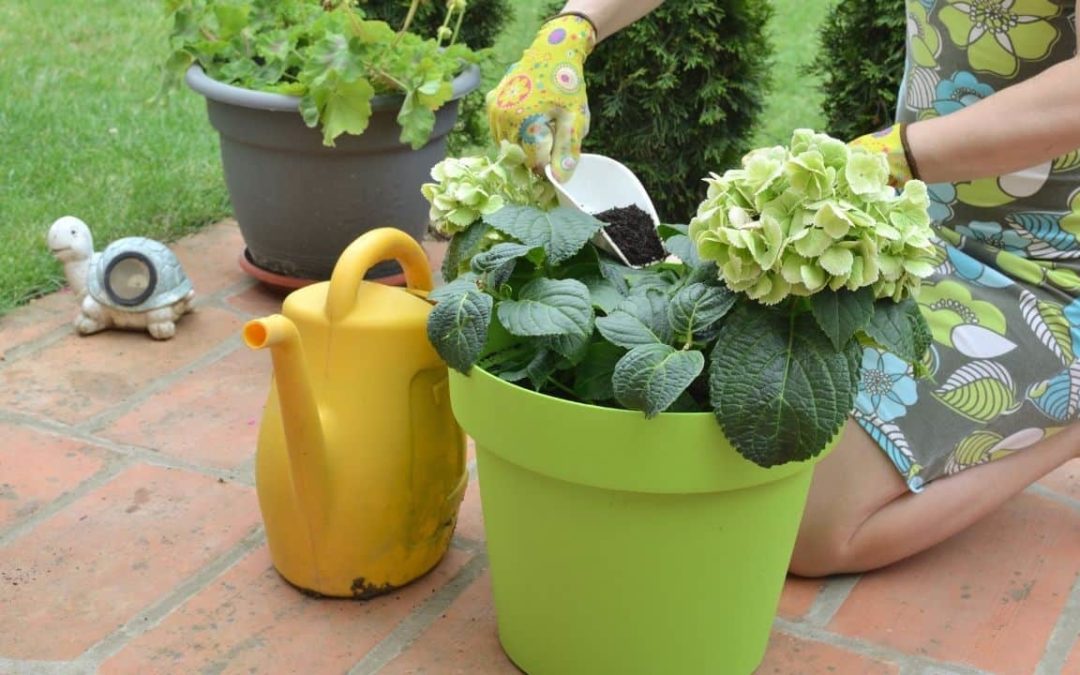Mid-summer is an especially nice time to start a garden journal. Your what-to-do-in-the-garden-today lists have shortened and everything is just so beautiful. It can be helpful to make notes of particular diseases or pests that may haunt your yard year after year. Phenology is the study of seasonal phenomena, especially in relation to animal activity, plant development and weather. So take a couple of minutes to stroll through and observe what is going on in your garden. Next season, you can look at your notes and give yourself and your garden a head’s up. When did sawfly larvae attack your mugo pine? What day did the Japanese beetles invade your rose border? Over the years you can transfer your notes onto a master calendar, building an excellent record of life on your own particular spot on the planet.
Now. Let’s talk about container plantings. Does the watering of plants in containers seem like a no-brainer? When it’s hot, everything needs lots of water, right? Not always! When it’s painfully hot and humid for you, plants can go into a state of suspended animation and shut down their water usage system. This is especially true for plants in pots since their roots can get hotter than those of plants in the ground. The moral of this story? Always check soil moisture before watering. If a container plant looks stressed and the soil seems damp, consider moving it into a cooler and shadier location.
This spring’s seesawing temperatures and hit-or-miss rainfall is surely having an effect on anything that you’ve planted in containers this season, from annuals to vegetables. Add in that crazy stretch of May temps in the 90s and you’ve got a perfect storm for plant stress. The Plant Information Desk has seen a lot of odd seasonal damage on everything-trees, shrubs, perennials and annuals. The good news is that as the weather has evened out most plants are growing well despite the craziness. But fertilizing your containers should be your next priority. Regular watering washes the nutrients out of the soil, especially in potted plants. Use a water-soluble fertilizer once a week or apply a dose of a slow release product. If you use the slow-release fertilizers, be sure to work it into the soil a bit so that it doesn’t float right out of your pots.
And don’t forget that deadheading spent flowers is essential for continued bloom of many annual and perennial plants. Roses appreciate the extra attention, too. So go ahead and pinch back any leggy or straggly growth. Your plants will be stronger and bushier in the long run and you will get more blossoms.
We’ve already seen samples of powdery mildew, so if we’re making any predictions, all signs point to another banner year for fungal diseases. Observation and inspection are the keys here. Look carefully at your plants as you water. Learn to recognize the difference between healthy looking foliage and those leaves that show signs of stress. Turn a few over and look at the growing tips for hints of disease and infestations. When you learn what is normal, it’s easier to spot what is abnormal. If you’ve had a history of powdery mildew on your peonies, phlox or ninebark, consider spraying preventatively with Revitalize, a biologic fungicide.
After all of this effort, don’t forget to enjoy what you’ve created. Sitting on the screened porch on a soft summer evening is a lovely experience. Have a glass of something. Listen for the droning buzz of foraging bees. Delight in the miniature fireworks created by lightning bugs. Or are they fairies, like Tinker Bell? Clap your hands and see what happens.


